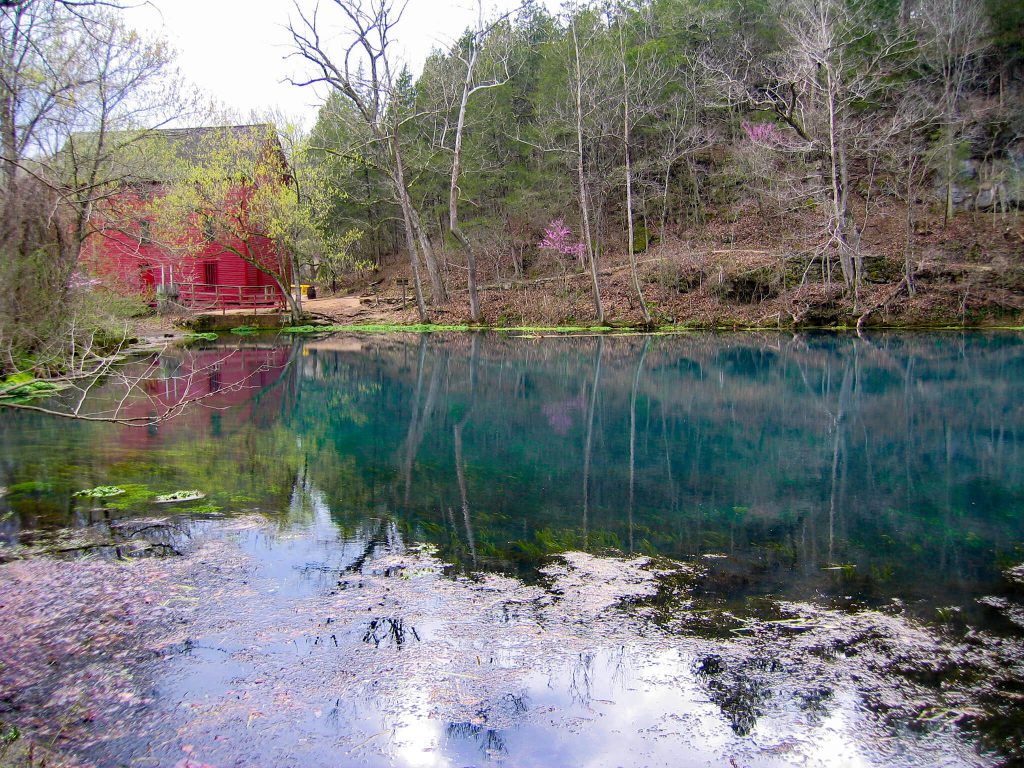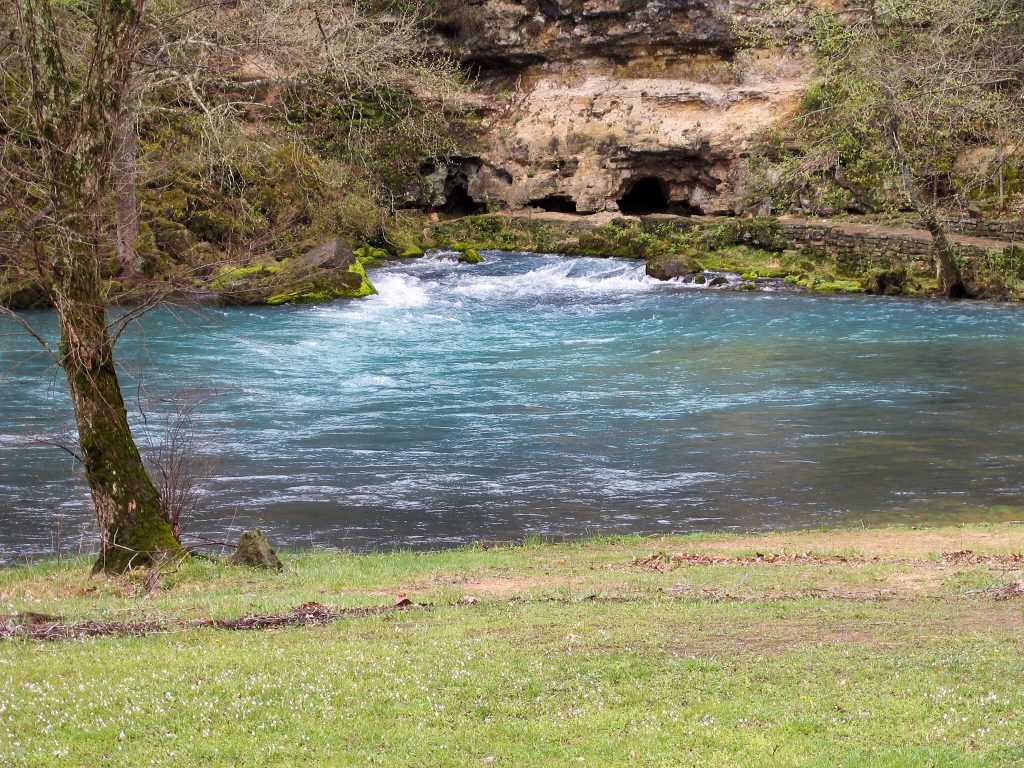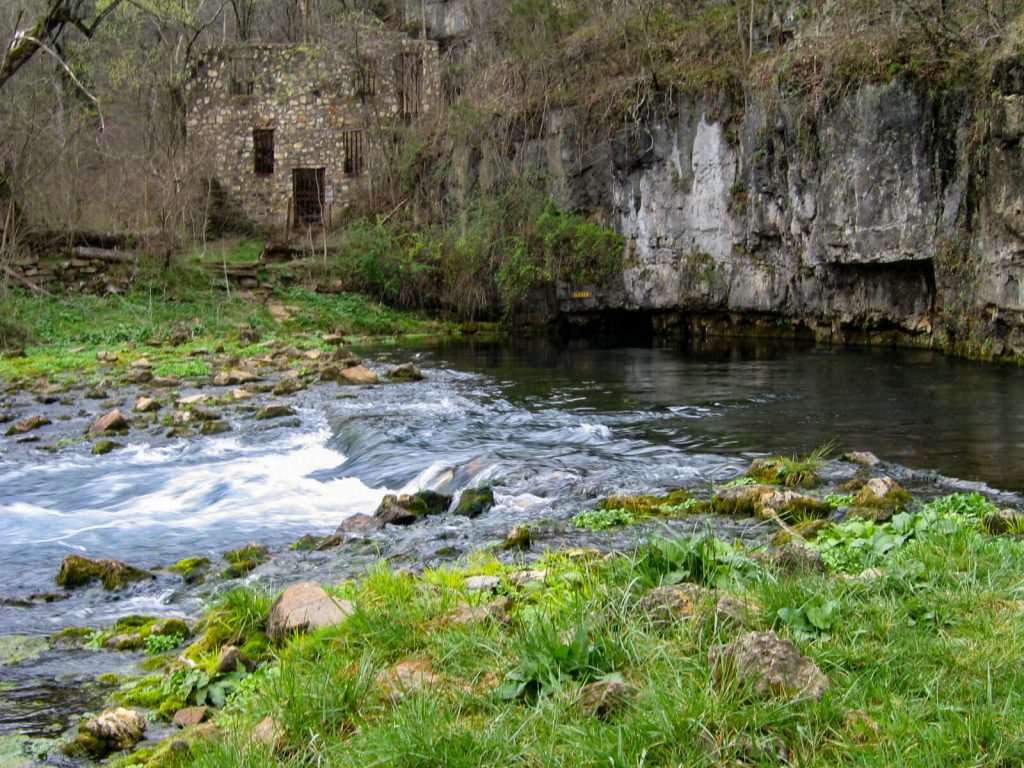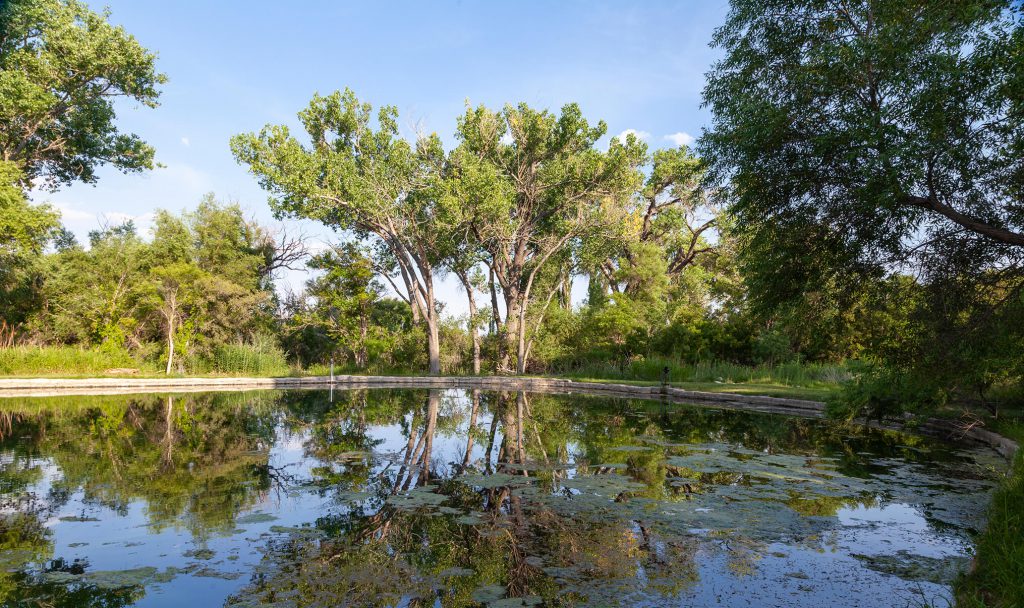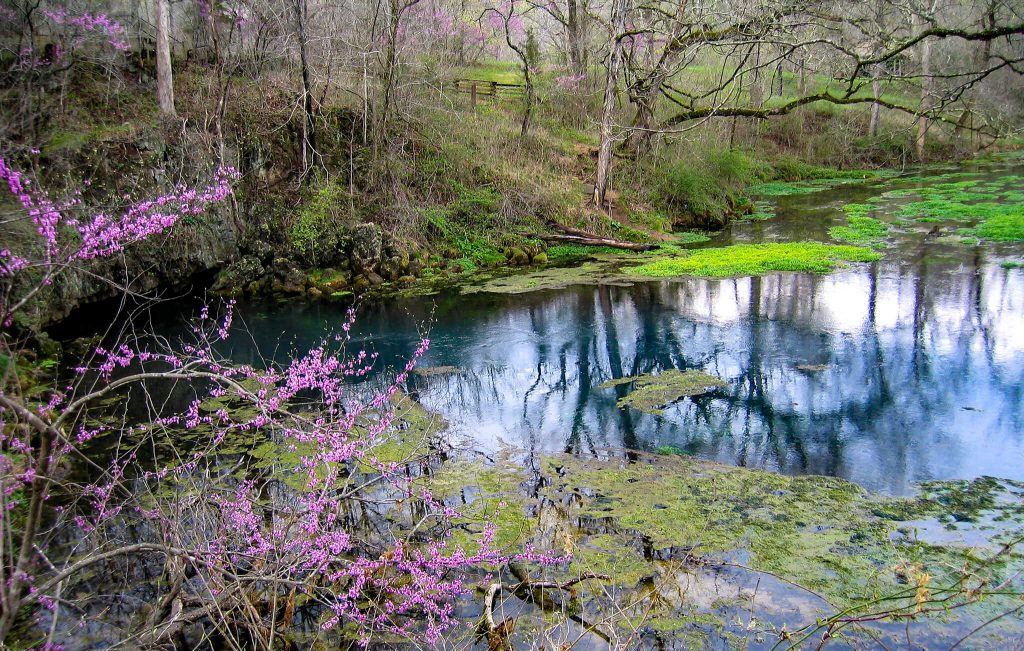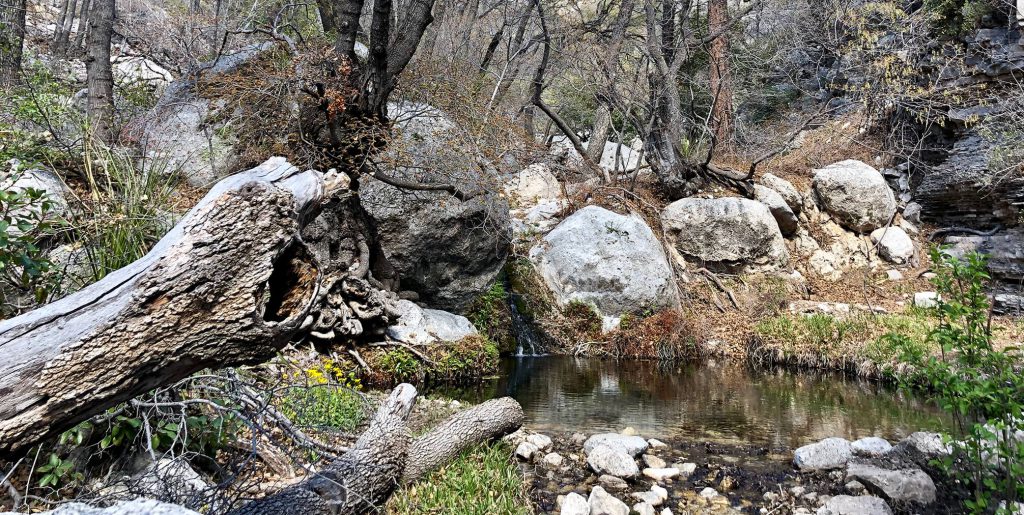Springs
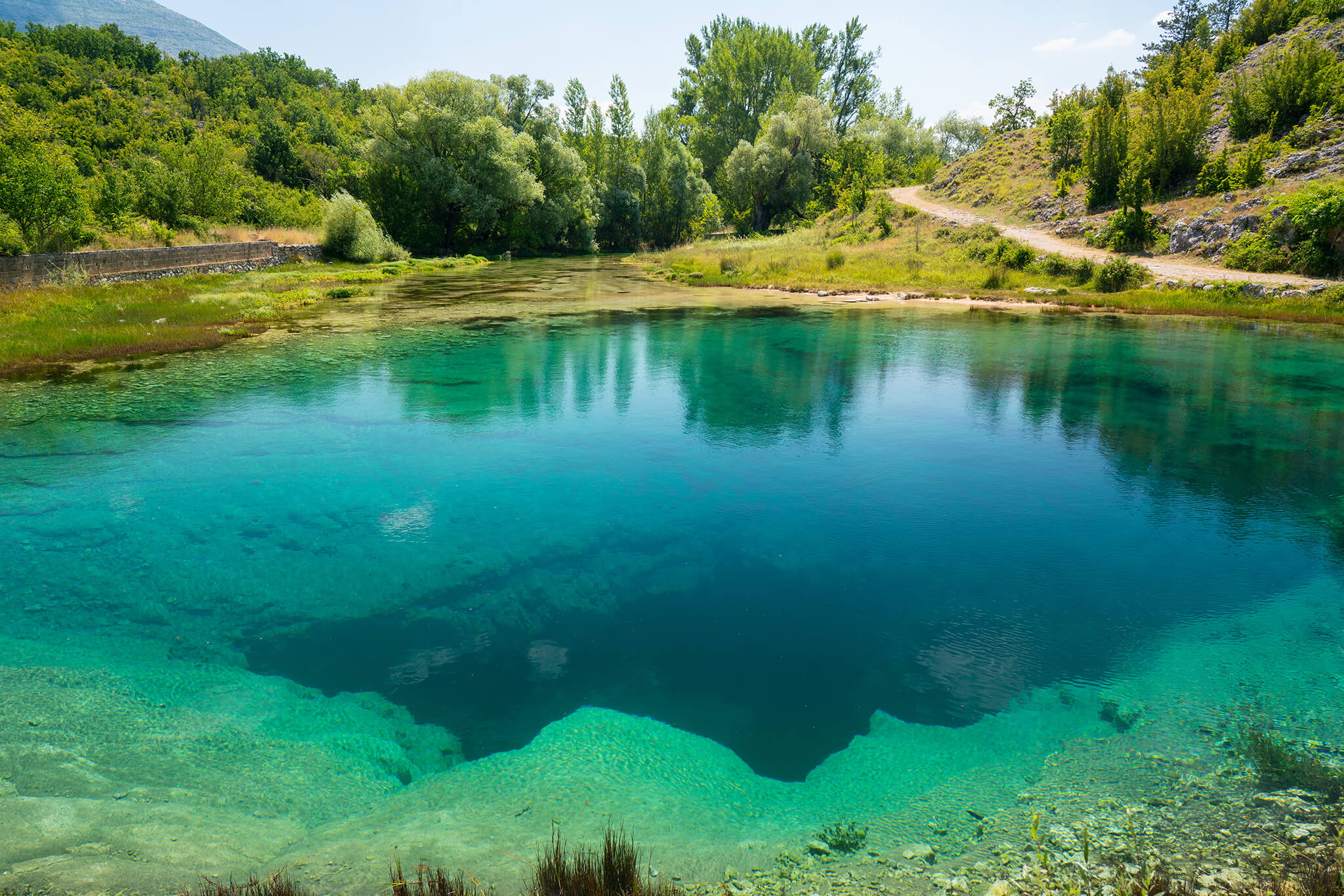
Aquifers are underground bodies of water. The water is stored and moves through any available cracks, pores, and other openings in rock or sediment. Where the water from an aquifer flows to the surface, it creates a spring. The world’s largest springs flow from karst aquifers. The US state of the Florida has the world’s greatest collection of large springs. Identifying the largest spring is complicated by the nature of karst aquifers. Most aquifers discharge groundwater with only mild differences between low and high flows. In karst, a spring may be dry one day and flood violently the next. If karst spring size is ranked by low, average, or high flows, the results will be very different each time. Big Spring in Missouri is one of the largest springs in the USA, with an average flow of 13,000 liters per second.
In all aquifers, rainfall soaks into the ground in upland areas, moves down to the water table, the surface below which all voids are filled with water, and then flows through the aquifer following the slope of the water table to return to the surface from a spring. Springs occur in low areas where the water table extends up to or above the land surface. Because the water table slopes down to the spring, the weight of water from higher in the aquifer pushes the water down and out of the spring.
In karst, water recharges (replenishes) the aquifer by flowing down fractures, sinkholes, conduits, and caves. Conduits are holes through which water can flow rapidly and without natural filtration, which makes them highly vulnerable to pollution. The smallest conduits are about 10 mm in width. When they are large enough for people to enter, they are called “caves.” The large size of conduits allows large volumes of water to flow rapidly through karst aquifers and out of karst springs, but only if large volumes of water are available for recharge. Karst conduits make karst aquifers susceptible to over-pumping by people who assume that the large volumes of water produced from wells is sustainable for long periods. Any aquifer and its springs can go dry if the amount of water pumped is generally greater than the volume recharged.
